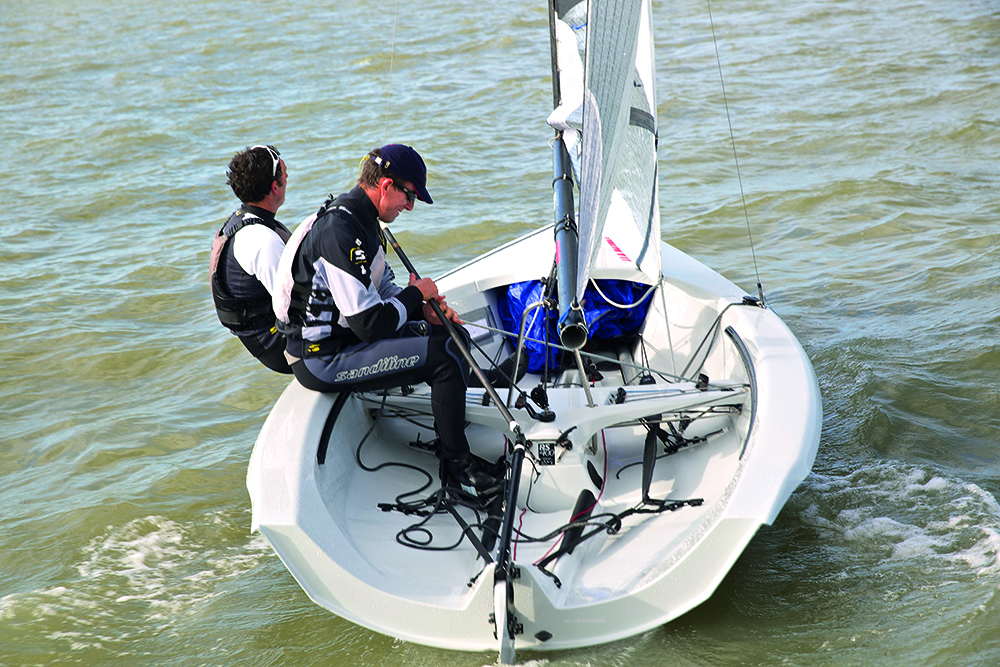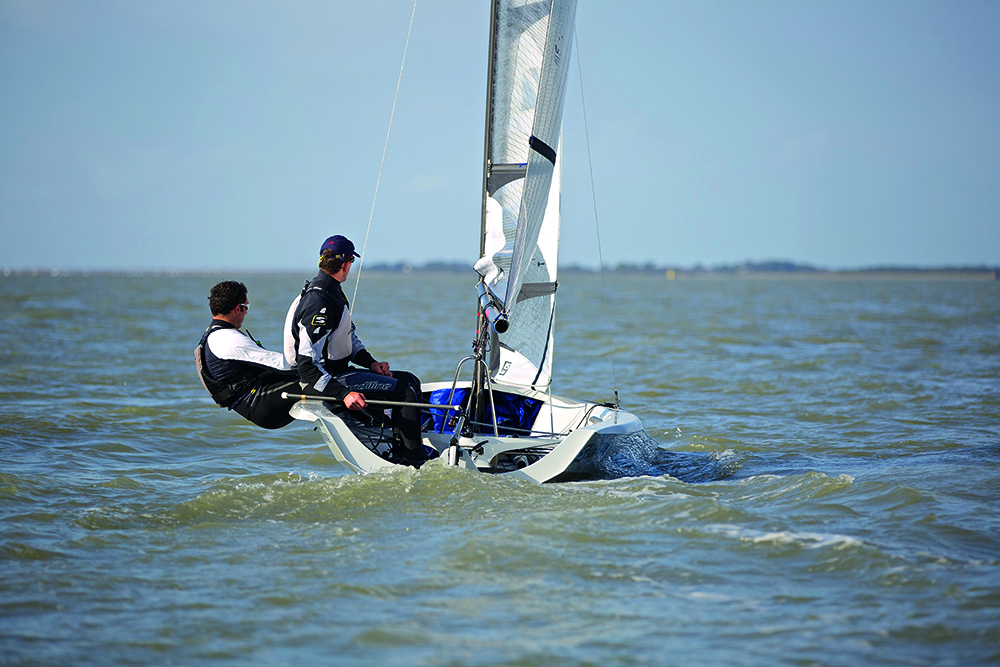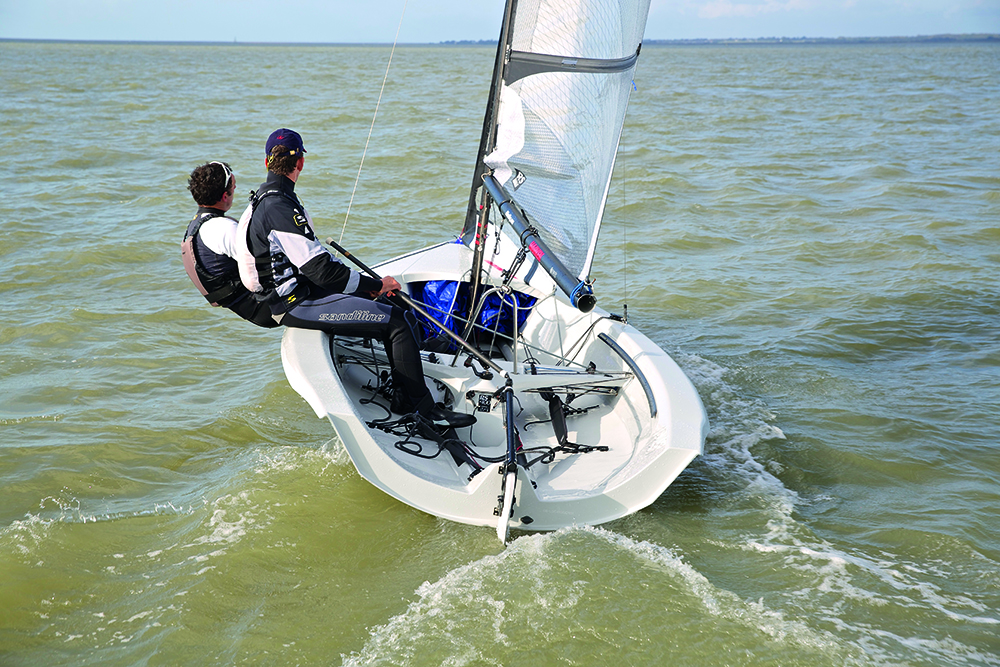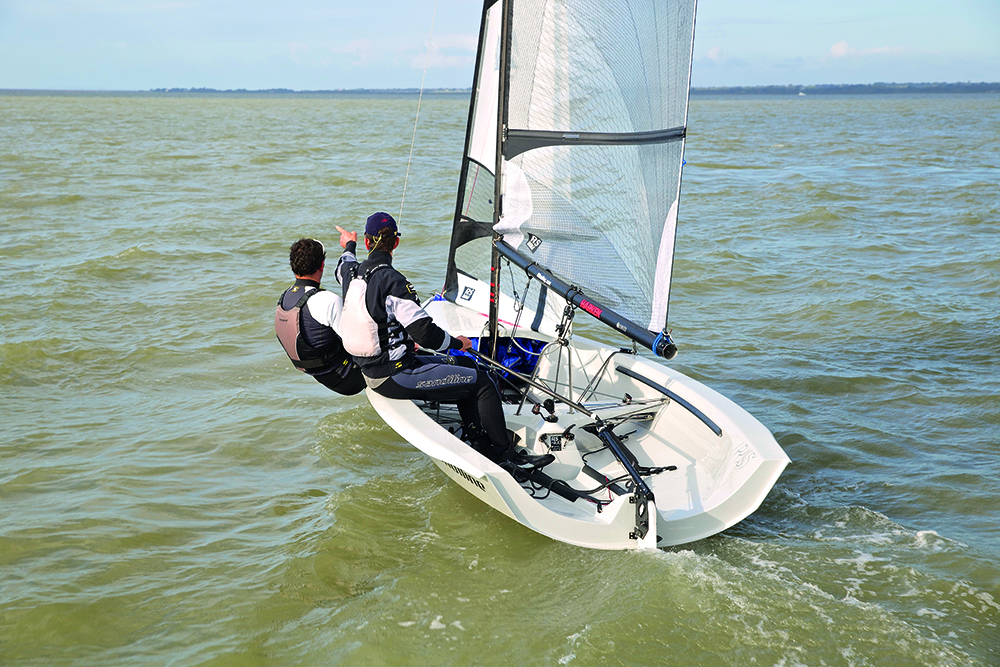Where To Look When Racing With Nick Craig
Book Extract
When you first start sailing, or are new to a boat, you tend to look at your feet to ensure that you aren’t tripping up. The key to progressing is looking further and further up and knowing when to switch between the modes.
Broadly there are 5 modes (places to look):
Mode 1: Your Feet
This is inevitable when you are new to the sport or a boat. It is an appropriate place to look when your boat handling is being pushed to its limit. Your boat handling limit will, of course, vary depending on how experienced you are in your chosen boat. However, you will miss a lot of windshifts and gusts if you look down too much.

Looking at your feet
You should move away from this mode as soon as possible, partly through being aware of where you are looking and by forcing yourself to look up. That can be hard as it may be outside your comfort zone and may mean that you fall over, or even out of the boat, occasionally, but it is a good thing to do at those training events.
Mode 2: Jib / Main Telltales
100% concentration on your telltales ensures that you are dead on the wind all of the time upwind and that your sails are always set optimally downwind. This is a good mode when boatspeed is critical, e.g. in a tight spot out of a start. However, you should eventually be able to keep your boat dead on the wind (or keep the sails optimally set) without spending much time staring at the telltales. Again, practice is key for this, forcing yourself to look at the water and not the jib is a good discipline.

Looking at the telltales
Mode 3: The Water
This is the most important step to move you from reactive to proactive sailing. By looking at the water you can spot gusts and the angle that they are moving towards you (by looking at the angle of the ripples on the water and the direction of travel of the gust).

Looking at the water
As gusts hit the water they fan out, just as an egg dropped on the ground does. So looking upwind on starboard tack, there is a lift on starboard to the left of the gust and a header on starboard to the right. This is especially pronounced where there are obstacles around your sailing water so the wind is bouncing down from height, e.g. at Frensham Pond, where I grew up and learnt to wind spot.
The more time you spend gust spotting, the better you become at it. By having a good idea of how strong and at what angle the next gust will hit, you can set your boat up and steer just before it hits to make the most of the gust so that it accelerates you rather than causes you to heel. Doing this, and consequently sailing consistently flat, is the biggest jump in speed most sailors can make. And it is free! A lot of coaches suggest you sail the boat flatter but miss the how? With practice, sailing the boat flat will become reasonably automatic so that you can look further up to the next few shifts…
Mode 4: Spotting Next Few Shifts
This is a key step to being able to consistently pick shifts well. By looking further up the course and looking at the direction that the next few shifts are coming down the course, you can map your next few tacks / gybes / downwind steering. By doing this you are making a proactive plan, rather than reacting to the shifts as they come in.

Looking ahead for the next few shifts
Mode 5: The Big Picture
With enough practice, modes 1-4 become more instinctive and you can focus on the big picture; looking at where you are relative to the fleet, what the clouds are doing and which side

You can focus on the bigger picture when modes 1-4 become instinctive
There is an enormous amount to look for when sailing. Making as much of this as instinctive as possible is the key to success and the reason why no one reaches the top level in sailing without many years of quality time on the water.
The ideal approach is to be able to sail in modes 4 and 5 most of the time, with modes 1, 2 and 3 coming instinctively through many hours of quality practice. With practice, your boat handling will be slick without looking at your feet, you can sail your boat fast without looking at the telltales, and a fleeting glance will give you enough perspective to know what the near term gusts, lulls and shifts are doing.
Top sailors are better at spotting shifts because they have the time to look for them since so much of their game has become instinctive. By spending more time looking for shifts, they also get better at spotting the subtle patterns in the water which indicate a gust / lull or header / lift, and so
Knowing when to switch between the modes is a powerful tool:
- If you get a great start, move quickly to mode 5 to assess how to consolidate that lead.
- If you are struggling to find a lane out of a mediocre start, move to mode 2.
- If you are sailing on a gusty lake and approaching the windward mark on a layline, modes 4 and 5 are largely irrelevant, so switch to mode 3.
- If you feel you’ve lost the rhythm of the windshifts, shift to mode 4.
An aware crew plays a key role in this. By knowing or communicating with the helm to understand which mode they are in, the crew can focus on other areas. For example, if the helm is in mode 2 focusing on speed, the crew can be in mode 5.
This may sound like a very complex process. With enough quality racing, switching between these modes also becomes instinctive, just as watching a toddler learn to walk is pretty painful but they get there in the end!
"At the 2013 D-One Nationals I had been out of the boat for a while. I was complacent about that and spent my time trying to be in modes 4 and 5. I fell out of the boat during a tight tack into the windward mark! This cost me the two points which went on to lose me the Nationals. I should have recognised my lack of time in the boat and spent a little more time in mode 1!"
TOP TIP
The one place you shouldn’t be looking is at your burgee. The burgee tells you what has just happened. You won’t be able to sail proactively looking at wind history! Sailing without a burgee eliminates this distraction, takes away a key tool from your opposition for knowing where your dirty air range is and marginally reduces weight just where you don’t want it, i.e. high up (which increases pitching).
© Not to be reproduced without written permission from Fernhurst Books Limited.